Even the most seasoned gardeners may be challenged in growing productive healthy tomatoes. Ensuring these plants get the right nutrients is crucial for optimal growth and productivity. Epsom salt, known scientifically as magnesium sulfate, is one practice most gardeners advocate. Magnesium and sulfur are two elements that play critical roles in plant physiology, hence the reason why horticulturists and gardeners recommend its use. In chlorophyll manufacture necessary for photosynthesis, magnesium is a major building block, while sulfur forms constituent parts of certain proteins and amino acids. This article will explore the unique benefits of Epsom salt on tomato plants, discuss its science behind it and suggest how to apply it practically; this inclusive exposition will enable you heighten your tomatoes’ healthiness or productivity.
The Science Behind Epsom Salt
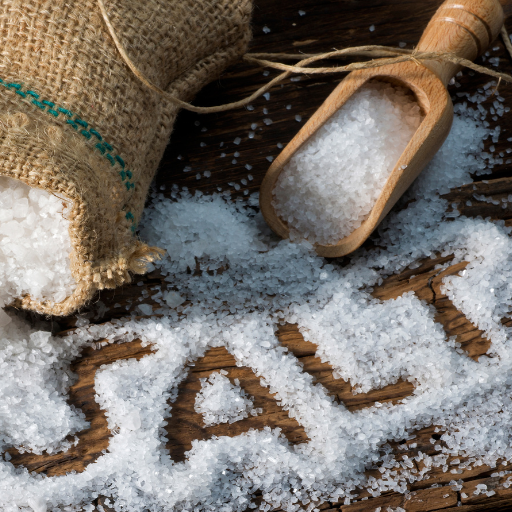
Scientifically, Epsom salt or magnesium sulfate has two main ways of benefiting tomato plants. The first way is through magnesium, the essential component of chlorophyll molecule that helps in photosynthesis by converting sunlight into energy. A shortage of magnesium leads to chlorosis, where leaves turn yellow because it reduces photosynthetic capability and plant growth; hence it affects fruiting too. Secondly, Sulfur which is also present in Epsom salt is involved in making important amino acids as well as enzymes thereby supporting healthy metabolism rates for plants. Together these elements boost the overall physiological functions thus improving the strength and productivity of tomato plants.
About Epsom Salt Composition
The primary constituent of Epsom salt is magnesium sulfate (MgSO₄·7H₂O), a compound that contains 9.8% magnesium (Mg) and 12.9% sulfur (S). Both elements are indispensable for the well-being and development of plants. As mentioned earlier, again, chlorophyll molecules have magnesium atoms at their core which make up crucial parts; the critical piece here is its specific role in the process by keeping photosynthesis going to produce energy necessary for all other metabolic activities within a plant system. It has an atomic weight of 24.305 g/mol, meaning that this element with sixteen protons in its nucleus weighs little, although very essential to life. On the other hand, sulfur has an atomic number of 32.06 and it takes part during synthesis of vital organic compounds like cysteine and methionine which are major building blocks needed by enzymes when they are carrying out their functions on substrates explained before this paragraph started; since both form proteins these become fundamental constituents even though some require further modification as they can only function “as-is”. Furthermore, crystallization process involving water ensures proper solubility levels so that it can dissolve easily into water thereby allowing immediate assimilation by plants through root absorption. Thus, the right quantities of Epsom salt can enhance tomato health and yield.
The Role of Magnesium Sulfate in Plant Growth
Various metabolic processes make magnesium sulfate an essential component for plant growth. The central atom in chlorophyll molecule, which is involved in photosynthesis, is one of the main roles played by magnesium. In this process light energy gets converted to chemical energy resulting to synthesis of carbohydrates that are required for growth and development of a plant. Due to a lack of enough magnesium, leaves become yellow or white as it decreases their ability to produce food through photosynthesis, hence affecting how plants develop.
Another significant element is sulfur, which aids in the creation of amino acids like cysteine and methionine. These proteins are important since they comprise enzymes responsible for driving many biochemical reactions that support metabolism in plants. Moreover, sulfates that come from Epsom salts can be easily taken up by roots because they are very soluble nutrients.
History Of Epsom Salt Use In Agriculture
Epsom salt takes its name from England, where it was first discovered in a town called Epsom; therefore, it has been used for ages in agricultural practices. Initially, the major use of Epsom salt was to correct soil inefficiencies due to its high speed solubility rate and absorption rate into plants. Since the 17th-century, farmers have employed applications containing magnesium sulfate so as to increase crop output, including those situated within areas with depleted soils, on account of Magnesium scarcity. As time went by, its utilization widened, such as being widely used when cultivating various crops under greenhouses, hence promoting good healthy expansion . The continued reliance on Epsom salt among farmers shows that the product has never lost its place amongst agricultural techniques practiced all over the years
Benefits of Epsom Salt for Tomato Plants
Epsom salt, which is rich in magnesium and sulfur, has a lot of advantages for tomato plants. Chlorophyll molecule, the green pigmentation of leaves that enables absorption of light energy used for photosynthesis is formed around magnesium which makes it essential for this process. Resulting in increased efficiency of photosynthesis, this leads to healthy vegetative growth and more fruits produced. They are the main building blocks in proteins necessary for plant growth and enzyme activity. Blossom end rot, nutrient imbalance as well as other common issues can be treated with Epsom salt thus guaranteeing proper development of roots and general plant wellbeing. This is why most gardeners prefer it since regular use ensures bigger, juicier tomatoes with better taste.
Boosting Nutrient Uptake
The major role played by Epsom salt in enhancing nutrient uptake among tomato plants lies on increasing soil magnesium levels that facilitates the availability of other essential nutrients into the root zone apart from acting as an ion carrier for phosphorous (P) and nitrogen (N). The website goes on to say that this enhances photosynthesis while also promoting root development and fruit formation. It was recommended by specific technical parameters that one tablespoonful per foot height per gallon water should be applied at all costs to ensure optimum nutrient uptake without over-fertilization.
- Application Rate: Dissolve 1 tablespoon Epsom Salt per foot height in 1 gallon water; Apply bi-weekly.
- Magnesium Content: Ordinary Epsom salts contain about 10% magnesium by weight or roughly 13% sulfur content.
- Soil pH Considerations: Soil pH between 6.0 -6-5 gives optimal results because it ensures maximal nutrient availability/uptake hence best utilized by plants.
Building Up Magnesium Levels
Sufficient amount of magnesium must be available to maintain healthy tomato plants as it is a major component of chlorophyll and photosynthesis. The best way to increase magnesium levels is through Epsom salt (magnesium sulfate). If soil tests indicate insufficient magnesium in the soil, one tablespoonful per gallon water should be spread around the plant’s root area or applied as foliar spray on the plant itself. To ensure that magnesium remains accessible for long periods, this solution should be used once every two weeks. Thus, maintaining soil pH between 6.0 -6-5 helps in optimizing absorption of nutrients such as magnesium and other essential minerals. The consistent use also maintains leaf coloration and vigor while supporting overall plant growth and fruit set.
Sulfur Requirement Support
Tomato plant health is dependent on sulfur, which has significant impact on enzymatic and metabolic functions. As well, it contributes to the formation of vital amino acids and proteins that make for strong cellular structure leading to enhanced overall resilience of plants. integration of Epsom salt (magnesium sulfate) into tomato plant care plan effectively supplements sulphur requirements. This recommendation states that you should dissolve one tablespoonful of Epsom salt inside a gallon of water and administer bi-weekly for 1 month or more. By so doing, you will not only cater for their sulphur needs but also enhance their uptake of other important minerals that makes them vigorous and productive. Sulfur levels can be checked regularly through soil tests which shall then provide basis for altering application rate or interval as necessary. Consistent management of sulfur levels fosters an optimal growth environment, resulting in healthier, more productive tomato plants.
Application Methods for Tomato Plants
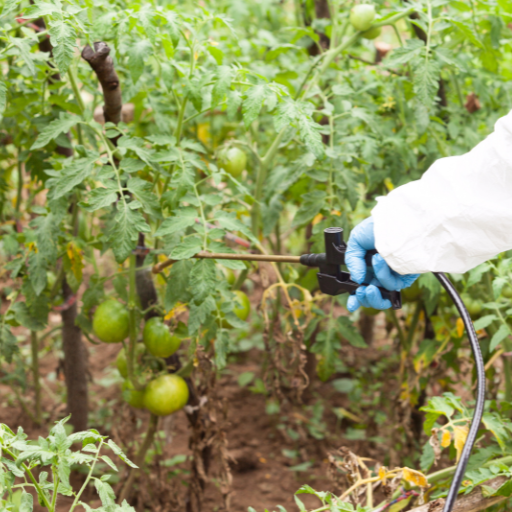
Tomato plants can be effectively have their drip irrigation system used on them. The water and nutrients are supplied directly to the roots of these plants by this system, ultimately minimizing wastage of water and increasing efficiency in nutrient intake. Mulching is another process whereby a layer of organic or inorganic material is put around the base of tomato plants. This practice helps hold moisture, control soil temperatures and suppress weed growth. Additionally, foliar feeding involves spraying diluted nutrient solutions directly to the leaves. This allows fast nutrient absorption leading to quick remedies for mineral deficiencies. The combination of these techniques will optimize tomato plant health as well as increase yield.
Foliar Spraying Techniques
Foliar spraying techniques are part and parcel of postmodern agronomy, whereby nutrient solutions are applied directly onto the foliage of tomato plants. This technique works best for micronutrient delivery since it promotes rapid uptake via leaf stomata. The best foliar spray concentrations usually range between 0.1% and 0.5%, enabling efficient use of needed nutrients like nitrogen, phosphorus, potassium, and microelements without causing phytotoxicity.
The best time for applying foliar sprays, therefore avoiding mid-day heat responsible for quick evaporation and poor uptake is early morning or late afternoon sun’s rays (Nelson et al., 2003). In addition to this, application should be done every 7-14 days during growing season depending on specific nutrient requirement and observed deficiencies (Marschner & Rengel, 2012). Spraying solution’s pH should fall within a range between 5.5-6.5 for better nutrient availability/uptake hence improved efficiency (Marschner & Rengel, 2012). Use of surfactant improves coverage as well penetration thus facilitating uniformity during leaves’ application.
At a practical level, for example, typical foliar feed may include calcium nitrate or magnesium sulfate, both at a dose of 2g/L in water-soluble fertilizers with chelated micronutrients. In addition, foliar analysis, along with regular monitoring of plant health and nutrient status, can help fine-tune the application strategy for optimal plant performance and higher yields.
Soil Drenching Practices
Soil drenching practices involve providing nutrient rich solutions directly to the root zone of tomato plants that are designed to penetrate soil and aid uptake of essential nutrients through root system. This method improves root development thereby allowing better absorption of nutrients and water. Soil drenching should consider soil pH, which should be within a range 6.0-6.5 so as to enhance nutrient availability (Gupta et al., 2001). The application frequencies, on the other hand, vary bi-weekly to monthly depending on plant growth stages and nutrient requirements (Gupta et al., 2001).
A typical drench solution could be a balanced NPK fertilizer like one in ratio 20:20:20 at a concentration of 1 gram per liter. Additionally, incorporation of beneficial microbes or mycorrhizal fungi may also assist in increasing nutrient uptake and improving soil health (Liu & Anderson, 2003). Moreover, using chelated forms of micronutrients such as Fe-EDDHA for iron or Zn-EDTA for zinc helps prevent nutrient lockup in alkaline soils.
Regular soil tests are recommended before drenching formulation is adjusted based on specific deficiencies observed (Rao et al., 2007). Besides this before it is applied, ensure the moisture content in your soil is enough because this will aid in distributing your drenching solution properly without over-saturation resulting into root disease conditions (Bonilla et al.,2015). Drip irrigation systems can be used instead when applying soil drench to reduce wastage thus facilitating precision delivery rates (Bonilla et al., 2015). These practices can work together with other agronomic interventions to greatly improving plant health and productivity.
Timing and frequency of applying.
When timing and frequency of soil drenching applications are planned strategically, it should be done according to the developmental stage of the tomato plants and specific environmental conditions. At initial transplanting phase, a drench application can alleviate transplant shock and stimulate early root development. Other subsequent applications should be timed with critical growth phases like flowering and fruit set when nutritional needs are highest.
For best results, following a schedule that calls for bi-weekly application throughout the growing season is often recommended. However, this rate could change depending on observed plant health and soil test results. For example, increasing the frequency to weekly during periods of fast vegetative growth would help meet the raised nutrient needs.
Prior to every application it is important to check out soil moisture levels.Waterlogging and predisposition to diseases occurs when soils are oversaturated while uneven distribution of nutrients takes place due to extreme dryness. As far as nutrition delivery and water management preciseness are concerned, consider using drip irrigation systems.
Technical parameters include keeping soil pH between 6.0-6.5, using balanced N-P-K fertilizers and incorporating chelated micronutrients to prevent deficiencies.In order for nutrient profile to conform with specific tomato plant needs through adjustments in concentration or composition of the drenching solution whenever necessary regular soil testing has been suggested.Conversely, technicalities such as maintaining a soil pH range between 6.0 and 6.5 utilizing balanced N-P-K fertilizers and including chelated micronutrients prevent inadequacies.Regular analysis also ensures that there is an alignment between nutrient profile vis-à-vis tomato plant needs which allows adjusting concentrations or compositions of such solutions if need be during drenching sessions per se .
Addressing Common Tomato Plant Issues
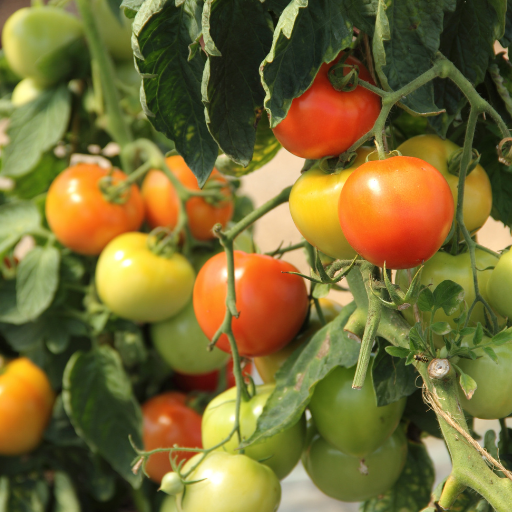
There is a wide range of growth and productivity issues which can pose serious threats to tomato plants. Calcium deficiency due to fluctuation in soil moisture leads to blossom end rot, one of the main difficulties. However, people need to make sure that water is given consistently and that calcium-rich additives are introduced into the soil. On the other hand there are also fungal diseases such as early blight and late blight that result in dark spots on leaves and stems. The management practices include using disease-resistant varieties, practicing crop rotation, and employing appropriate fungicides for control. Furthermore tomatoes are highly susceptible to pests like aphids, whiteflies and tomato hornworms. Using beneficial insects, regular monitoring, or application of organic or chemical insecticides integrated pest management programs will help keep off pest populations thus protect plant health.
Preventing magnesium Deficiency
Between leaf veins turning yellow while the veins remain green is referred to as interveinal chlorosis leading to magnesium deficiency in tomato plants. It is a complex task ensuring there is prevention against magnesium insufficiency though but it can be done by some ways. One should ensure that soils pH ranges between 6.0 – 6.5 since magnesium level dramatically decreases when soils become acidic again properly maintained soil pH would boost magnesium availability; however if it’s less than 6 it should be raised by liming or adding wood ash though do not exceed more than 7 (Curtis). Magnesium sulfate (Epsom salt) at a rate of one tablespoon per gallon of water can correct deficiencies, typically requiring 1-2 applications throughout the growing season (Peschl et al.,2018). Similarly, we could also have our farms tested for magnesium levels to maintain them at about 50-100 parts per million (Smith et al.). In addition mulch and compost made from organic matter enhance structure and uptake of magnesium in the soil (Berman). Moreover, consistent watering practice helps in soil moisture maintenance, supporting nutrient uptake.
Improving Blossom end Rot
Tomato plants develop blossom-end rot (BER) due to calcium imbalances. Thus, adequate levels of calcium must be maintained in the soils at 1000-15000 ppm. To monitor and make necessary amendments, it is important to conduct regular tests on the soil’s calcium content. Furthermore, consistency in watering practices is also key since this will lead to fluctuation of soil moisture which can worsen the situation. Steady soil moisture levels are maintained by utilizing mulching techniques. Too much nitrogen should be shunned due to its interference with calcium absorption thus a balanced fertilization approach should be used instead (Bergman). Spraying fruits developing on plants with foliar application of calcium solutions using rates of 1-2 teaspoons of calcium chloride per gallon water has been recommended for direct supplementation (Peschl et al.,2018). Monitoring and adjusting environmental conditions coupled with appropriate soil and nutrient management are key prevention and mitigation strategies for blossom end rot.
Enhancing Fruit Production
The choice of disease-resistant varieties of tomatoes which yield a great deal should be made first when aiming at increasing fruit production in tomato plants. The right pruning procedures improve air flow and sunlight penetration resulting in enhanced growth performance as well as lower risk of diseases infection. Another thing is just keep water supplies up with constant deep waterings and drip irrigation ensuring uniformity for proper fruit development. Also just provide enough phosphorous and potassium through balanced fertilization because these nutrients are needed for flowering and fruiting (Smith et al.). Integrated pest management programs need to control pests such as insects causing crop loss preventatively. Also offer support systems like stakes or cages so that the plant can stay upright thereby improving fruit production through minimizing stress levels within the plant structure (Moore, Paul D., Department Of Plant And Environmental Sciences,and Jason C. White).
Environmental and Soil Considerations
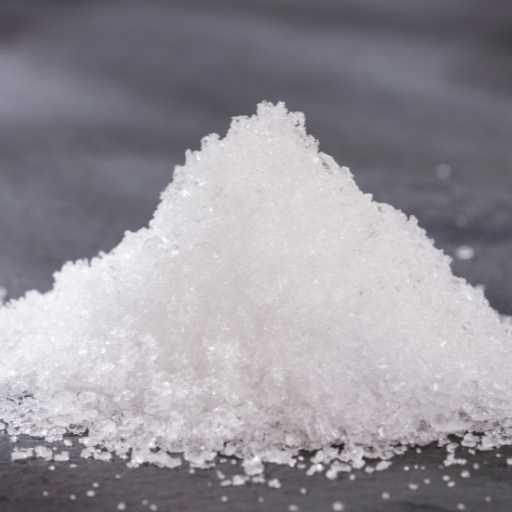
For best tomato farming practices, the first step is having well-drained soil that is rich in organic matter. Tomato plants grow well in silty loam soils with a pH range of 6.0 to 7.0 and slightly acidic to neutral soils. Test the soil for nutrient levels and pH adjustments as needed should be done using a soil test kit. Moreover, for controlling soil borne diseases and pest build up, crop rotation is implemented. To maximize photosynthesis and fruit production full sun exposure of at least 6-8 hours daily is aimed at; besides maintaining even moisture content in the garden by mulching followed by drip irrigation aids in reducing water stress that may affect healthy root development.
Lastly, improved/nutritionally enhanced crops can also affect human health./ These are merely two ways among many possible ways in which plant growth can be manipulated with improvements on beneficial compounds such as polyphenols or antioxidants;/ these are just examples of how human health can become influenced by genetically modified organisms (GMO) through better nutritionally improved crops./ Finally, genetic engineering has been used to produce fruits and vegetables which have benefits to humans including nutrition,/ and these are just a few instances where better nutritionally enhanced crops resulting from genetic modification may come into play.
Impact on Soil pH
Tomato cultivation relies heavily on proper regulation of soil pH due to its influence on nutrient availability and microbial activity within the soil. / It has therefore been suggested by most experts that/ Top authoritative sources advise keeping/ It has been stated by top authorities/ For the best performance of tomatoes, it is recommended that tomatoes be grown in slightly acidic to nearly neutral soils (pH between 6 – 7). This acidity-neutral range ensures nitrogen, phosphorous, potassium availability thus facilitating positive microbial interactions necessary for their uptake./ Allowing soil conditions outside this area will starve crops off valuable nutrients or subject them to toxic amounts making them unhealthy and unproductive at the same time./ In order to control soil pH, regular soil checks should be conducted where lime (to raise pH) or sulfur (to lower PH) can be used in response to requirements of specific soils and environmental conditions. Good management of soil pH is therefore key if tomatoes are to grow well.
Sustainable Gardening Practices
Sustainable gardening practices are farming methods that promote the long-term sustainability of the environment without compromising productivity. / One way is through/ This involves/ These include/ Incorporating indigenous plants in a garden design will encourage biodiversity resilience as these species are adjusted to local environments and require fewer inputs thus conserving energy./ Moreover, the practice of integrated pest management (IPM) reduces reliance on synthetic pesticides through biological, cultural, and physical processes aimed at pests’ population reduction. Lastly, maintaining diversity through polyculture and crop rotation helps prevent pest and disease outbreaks, improve soil quality ensuring better yield from gardens.
Integrating with Other Fertilizers
Organic farmers need to understand how their use complements other forms of fertilization in improving fertility of soil. Organic fertilizers such as compost and manure provide nutrients that last longer while also enhancing soil structure/microbial activity/enhancement over a long period. Conversely, synthetic fertilizers instantly release nutrients, which plants can absorb more easily during their growth. A combination of both types ensures optimal plant growth due to availability of immediate plus sustained nutrient supply.
The nitrogen (N), Phosphorus(P), and Potassium(K) ratio plays an important aspect in integrating fertilizers. For instance, a compost-like substance can have an average ratio around 1-1-1, whereas synthetic ones come with concentrated nutrients, even a 10-10-10 formulation. By combining these two approaches, a balanced nutrient profile can be achieved, supporting root formation, foliage development, and flowering.
In addition, the management of application rates and timing is important. Prior to planting, organic materials should be mixed with soil so that they can decompose and release nutrients. On the other hand, synthetic fertilizers can be applied at critical growth stages for an added nutrient boost. For example, adding synthetic nitrogen at the start of the growing season will greatly improve leafy growth while organic matter further enhances soil health and microbial diversity.
Finally, soil pH must be considered since it affects the availability of nutrients. Over time, organic amendments can buffer pH imbalances, while lime or sulfur may help maintain optimum levels of acidity or alkalinity in combination. By following up on regular soil tests, one can make adjustments that lead to efficient and environmentally friendly nutrient integration.
Practical Tips for Gardeners
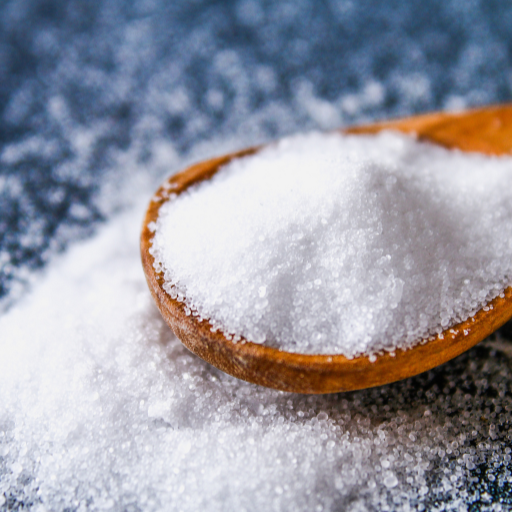
- Commence with a Soil Test: A soil test is necessary before you apply any fertilizers. This will show the current nutrient levels, pH and other key parameters in the soil that you can use to amend it correctly.
- Select Suitable Fertilizers: Choose fertilizers that address the deficiencies noted in your soil tests. A balanced nutrient supply should also include some organic and synthetic fertilizers. Manure or compost enhances soil structure, while chemical hybrid ones give quick nutrients boosts.
- Timing and Application: Organic fertilizers should be applied several weeks before planting so that they decompose and release nutrients. For instance, nitrogen, ideal for vegetative growth, should be used early in the season as synthetic fertilizer. To avoid over-fertilizing, always follow the manufacturer’s application instructions.
- pH Monitoring of Soil: Maintaining optimum soil pH (usually between 6.0 and 7.0 for most plants) is important for nutrient uptake. Organic amendments should be used to gradually buffer pH, or lime and sulfur can be added based on the results of your soil test.
- Water Management: Watering practices that save on water also enhance nutrient uptake reducing runoff too. Water deeply but infrequently to encourage root growth and reduce leaching of nutrients.
Measuring and Mixing Epsom Salt Solutions
Epsom salt (magnesium sulfate) may benefit your garden if correctly applied. Preparing an Epsom salt solution involves measuring it first; you need to determine its concentration level. One common recommendation is dissolving 1-2 tablespoons of Epsom salts per gallon of water for general use such as foliar feeding or including it in a hydroponic system among others:
- Measure out the Epsom Salt: Measure the desired amount of Epsom salts using a regular kitchen tablespoon.
- Dissolve in Warm Water: Dissolve the measured Epsom salt into a gallon of warm water. Warm water dissolves faster.
- Stir Thoroughly: Stir the mixture until the Epsom salt is completely dissolved for even distribution.
- Application: The solution can be poured around the base of plants to drench them, while foliar spray can be carried out by transferring it into a spray bottle and lightly misting the leaves with it.
Testing how your plants respond to the Epsom salt concentration is important and then making adjustments based on that. Regular monitoring will help achieve the best results without the risk of overapplication.
Best Practices for Application
When applying Epsom salt solutions to your garden, consider these best practices to optimize plant health and nutrient uptake. First, always perform a soil test prior to application as this will confirm if you require magnesium or sulfur since Epsom salts may not be used otherwise. Secondly, apply sparingly at most once a month so as not to develop any potential nutrient imbalances or salts build up within your soil. Thirdly, modify your application method depending on plant type; some plants might require more foliar sprays whereas others would do better from soil drenching. Lastly, look out for signs such as scorching or wilting leaves which could indicate that you are over-applying something, and therefore adapt your program accordingly so that you still have healthy plants growing all along them.
Monitoring Plant Health and Adjusting Usage
It cannot be overemphasized how important it is to monitor plant health to get the most out of Epsom salt application while avoiding adverse effects. Signs of healthy plants include vibrant leaf color, vigorous growth, and a lack of pests or diseases. On the other hand, discoloration in leaves, dwarfing, and abnormal spotting may indicate potential problems.
- Leaf Color and Texture: Observe the leaves for signs that point to magnesium deficiency e.g. yellowing between veins. If any such signs occur, one might consider a slight increase in Epsom salt concentration but it should not exceed 1 tablespoon per gallon standard recommended dosage.
- Growth Patterns: Monitor plant development within a week. Slow, unexpected growth could suggest a need for magnesium or the possibility that Epsom salt is being applied too heavily. Lower the dosage if you see burn damage along leaf margins or if plants wilt despite enough watering.
- Soil Testing: Periodically perform soil tests to analyze potassium levels. Optimum soil magnesium levels range from 1.8 to 3.2 meq/100g. If magnesium exceeds this value, reduce the frequency at which Epsom salts are added.
- Water pH Levels: Monitor your irrigation water’s pH level as well. Magnesium sulfate lowers water pH slightly, which is helpful when certain plants require slightly acidic conditions. The ideal range for many crops’ pH is 6 up to 7.
- Foliar Testing: Use foliar tests to measure nutrient uptake in leaves directly. Normally, dry leaf weight contains between 0.25% and 0.45% of its weight as magnesium content.
By incorporating these observations and adjustments, gardeners can fine-tune their Epsom salt applications to enhance plant health while preventing nutrient imbalances. Regular review and adaptation based on plant responses and soil conditions will ensure optimal growth and development.
Frequently Asked Questions (FAQs)
Q: Why should I use Epsom salt on my tomato plants?
A: Epsom salt is good for tomato plants because it provides essential nutrients like magnesium and sulfur that are crucial for their growth. These nutrients help in the production of chlorophyll and improve the overall health and yield of your tomato plants.
Q: How do I add Epsom salt to the soil for tomato plants?
A: To use Epsom salt directly, mix one tablespoon of Epsom salt to a gallon of water and apply it to the soil around the base of each tomato plant. This helps in the efficient absorption of magnesium in the soil.
Q: When should I start using Epsom salt for my tomato plants?
A: You can start using Epsom salt during seed starting or when planting tomato seeds. Adding Epsom salt helps in seed germination and promotes healthy seedlings.
Q: Can I use Epsom salt for other vegetable plants?
A: Yes, Epsom salt is beneficial not only for tomatoes but also for other vegetable plants like peppers. Adding Epsom salt to the soil of peppers and various other vegetable plants helps improve their overall growth and yield.
Q: How much Epsom salt should I add per foot of plant height around my tomato plants?
A: As a general rule, you can add one tablespoon of Epsom salt per foot of plant height around the base of your tomato plants for optimal growth and nutrient absorption.
Q: What are the signs that my tomato plants need Epsom salt?
A: Tomato plants showing signs of magnesium deficiency, such as yellowing leaves or poor fruit development, may benefit from the addition of Epsom salt to the soil. Conducting a soil test can confirm if there is a lack of magnesium.
Q: Is it possible to add too much Epsom salt to tomato plants?
A: Yes, adding too much Epsom salt can lead to an excessive amount of magnesium in the soil, which can interfere with the absorption of other essential nutrients. Always follow recommended guidelines when adding Epsom salt to avoid adverse effects.
Q: How does Epsom salt help with the production of chlorophyll in tomato plants?
A: Magnesium, which is provided by Epsom salt, is a central component of chlorophyll molecules. Without adequate magnesium, the production of chlorophyll is hindered, leading to less efficient photosynthesis and weaker plants.
Q: What do healthy tomato plants look like when grown with Epsom salt?
A: Healthy tomato plants grown with the appropriate amount of Epsom salt typically have vibrant green leaves, strong stems, and well-developed fruits. They are less likely to show signs of nutrient deficiencies and tend to have a better yield.






